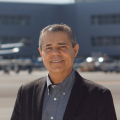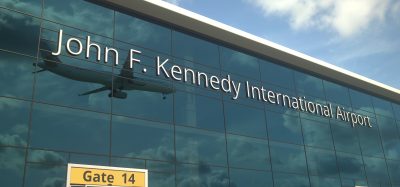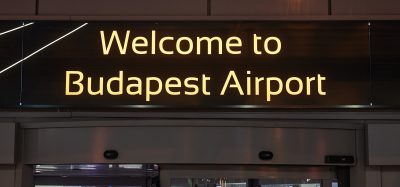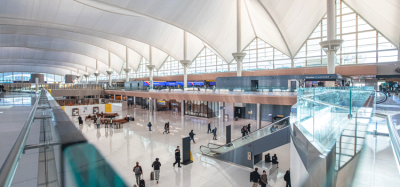Plato was right! Reflections on innovation in civil aviation
- Like
- Digg
- Del
- Tumblr
- VKontakte
- Buffer
- Love This
- Odnoklassniki
- Meneame
- Blogger
- Amazon
- Yahoo Mail
- Gmail
- AOL
- Newsvine
- HackerNews
- Evernote
- MySpace
- Mail.ru
- Viadeo
- Line
- Comments
- Yummly
- SMS
- Viber
- Telegram
- Subscribe
- Skype
- Facebook Messenger
- Kakao
- LiveJournal
- Yammer
- Edgar
- Fintel
- Mix
- Instapaper
- Copy Link
Posted: 23 February 2024 | Marcelo Mota | No comments yet
Marcelo Mota, Commercial Director & CCO of Aeroportos Brasil Viracopos S.A. tells International Airport Review why necessity is the mother of invention in airports.
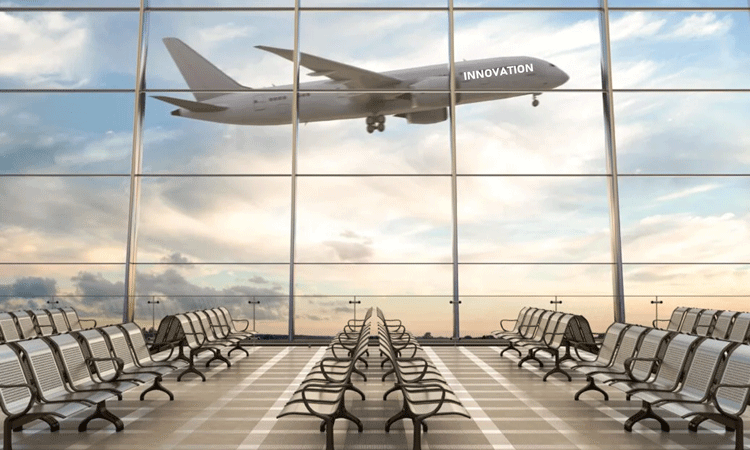

Any company that wishes to grow, improve its efficiency, and create value must develop a corporate culture of seeking innovation in its products, services, and processes.
Without delving into the discussion of the many definitions of innovation, it is important to highlight that business leaders recognise the importance of innovation, but their approach to this topic is usually very informal, and the decision-making process for adopting innovations discourages a greater number of initiatives. They also agree that the greatest challenge is finding talent in the field, but disagree on the reasons for this shortage. Fortunately, there is a general consensus that there are some important steps to follow to instigate innovation.
Creating specific organisational structures for innovation development is not one of those steps. As mentioned earlier, the culture of innovation is much more effective than the structure of innovation. In other words, innovation mentality and processes must permeate all departments of the corporation rather than creating a specific unit in the company’s organisational chart to advocate for democratised innovation. But how do you instil such a culture? How do you provoke employees to continuously think, breathe, and bubble with innovations?
The process
Plato, a philosopher and mathematician from the classical period of ancient Greece, author of several philosophical dialogues, and founder of the Academy in Athens (the first institution of higher education in the Western world), stated: “Necessity is the mother of invention.” So, here is the (best) way to answer the above question! Map and identify the needs (such as cost reduction in a process, customer satisfaction, improvement of a product or service) of your department or company. An unmet need motivates the creation of a solution to meet it, which in turn brings immense positive results precisely by solving something necessary.
Once you have chosen this primary path of focusing on identifying unmet needs, there must be a willingness to embrace some secondary principles of innovation: (i) being open to new ideas, (ii) being willing to experiment, and (iii) being prepared to take risks – and the consequent ‘learning failures’. Without facing these intrinsic characteristics of the innovation process, it is certain that the development of a solution to a need will be aborted before bearing fruit. Let us remember Thomas Edison’s 1,200 unsuccessful attempts before finally inventing the electric light bulb…
A survey conducted by the Boston Consulting Group, which identified the 20 most innovative companies in the world, confirms these principles. Apple, ranked first in this ranking, excels in delivering a fantastic customer experience with extremely modern designs while producing a steady stream of new ideas that redefine old product categories. 3M, in second place, has a strong internal culture of creativity with formal incentives for those who innovate and develop new products, resulting in a tremendous success rate in converting ideas into profitable products. Microsoft, in third place, is characterised by a management mindset that pressures for continuous product development and expansion into new markets.
When looking at the civil aviation industry, with its many distinct business segments, it is clear that there is a vast field for innovation, mainly due to the existence of so many opportunities for unmet needs – whether they arise from improving the customer journey, increasing operational efficiency (cost, revenue, and time) of processes, enhancing team productivity, ensuring better results in safety and AVSEC security areas, or creating new business niches. The possibilities are truly limitless!
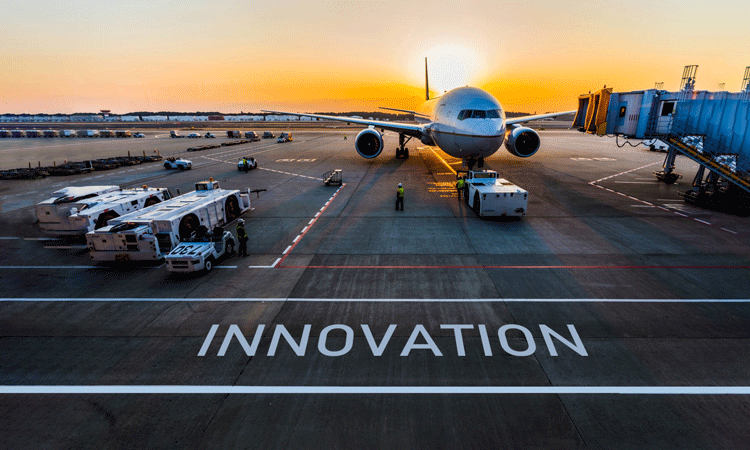

Airport innovations
Some initiatives already adopted by airports, airlines, service providers, and industry suppliers clearly outline this fertile field of opportunities. In most cases, to address an unmet need, it is necessary to combine a good idea with the use of technology (one of the main and most efficient tools of modern man), but this is not a necessary condition. Sometimes, a critical look at a process that can be improved by doing something different is enough. Other times, it is essential to invest in physical infrastructure. Or even apply a mixture of everything. In short, as mentioned before, opportunities abound! From what has already been innovated and what can still be created, I highlight three real examples to illustrate these reflections:
- “Blue Carpet” sequential boarding call system: The Blue Carpet is a novelty adopted by the Brazilian airline operator AZUL, which uses a combination of image projector technology and software algorithms to facilitate faster boarding, avoiding long queues or crowding at the gate, while preserving social distancing at the airport. Visually straightforward for passengers, they simply need to identify their seats on the projector and proceed to the ‘carpet’ projected on the floor when boarding. The system prevents bottlenecks in the aisle with carry-on luggage, without the need for multiple sitting and standing until everyone is seated, prioritising the safety and comfort of boarding to the destination.
- “Kiss & Go” express drop-off lanes at airports curbside: The expression may be surprising at first, but this is precisely the concept implemented by Aeroportos Brasil Viracopos airport operator for designated quick parking spots for express passenger drop-off at the airport curbside. More than 30 spots are reserved in the curb lanes in front of the passenger terminal’s departure level for vehicles with passengers. A maximum – and very short – time of stay is established by the term “kiss and go.” The idea of implementing this concept at Viracopos was inspired by the model applied in subway stations in the city of Toronto, Canada. The ‘kiss & go’ period is the time sufficient for the driver to give a (swift) kiss to the passenger and leave, creating an express flow of vehicles without disrupting traffic.
- “123 Miles” travel marketplace: This platform uses software to negotiate and transforms miles that would be lost by other people into more affordable travel options for prospective passengers. As a result, the company operating the platform offers flights up to 50% cheaper for those looking to save money and travel more. It also offers options for hotels and travel packages, insurance, and car rentals.
Thank you, Plato, for teaching us the way!
